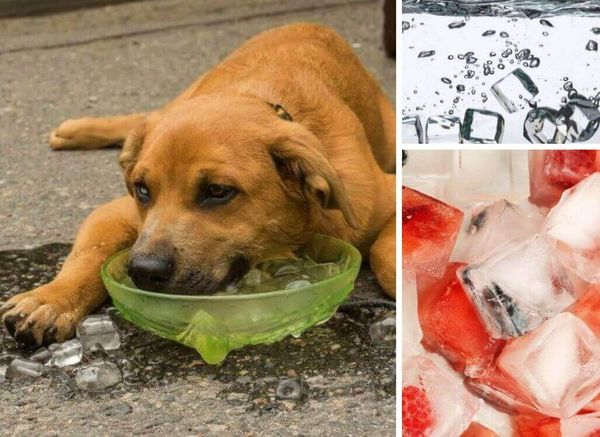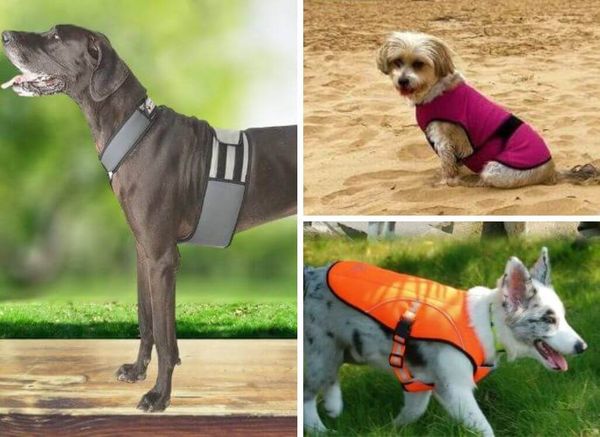Pets are amazing creatures that bring us so much joy and happiness. They love playing outside and running around, especially when the weather is warm and sunny. And just like us, they too can get hot, uncomfortable, and even overheated.
Of course, you love your furry friend and want to do everything you can to keep them cool and comfortable in hot weather. You may already provide them with plenty of water, shade, and even frozen treats, but sometimes, despite your best efforts, your dog could still overheat.
As pet parents, we need to be aware of the signs of overheating. "There is a big difference between a mildly overheated pet and one experiencing heatstroke." However, if you don't take steps to cool your dog down, overheating can lead to heatstroke, with serious health consequences and even death.
It's also important to know that some dogs are more prone to overheating than others. While it's easy to assume that longer-haired breeds might have issues in the summer months, there are other breeds that suffer too. Dogs with flat faces, such as Bulldogs, Pugs, or Pekingese, have limited ability to pant, meaning they can't cool themselves down as easily as other dogs. Take extra care to ensure their safety and comfort. Keep water and shade nearby, and monitor your pet closely for signs of overheating.
Always remember that a mildly overheated pet can quickly turn into one experiencing a life-threatening emergency. That's why it's essential to understand the dangers of overheating and how to prevent heatstroke in your furry friend. Recognizing the signs, keeping calm, and knowing what to do can mean the difference between life and death for your beloved pet.
Signs of Overheating
A mildly overheated dog can display symptoms such as heavy panting, mild fatigue, and an unwillingness to exercise or play.
If you have a pet thermometer, check your dog's temperature every few minutes. "A mildly overheated pet can have a temperature over 102° F" (38.9 ° C). If it goes above 104°F (40°C), seek immediate veterinary care.
What to Do if Your Dog Overheats
If you think your dog is overheating, take the following steps:
1. Move your dog to a cooler area: Find shade or bring them indoors to a room with air conditioning, or use a fan to cool them down.
2. Douse your dog with cool water, focusing on the neck, belly, and paws. Avoid using ice-cold water, as it can cause shock and make the situation worse. You can also lay them on a wet towel.
3. Offer water: Make sure your dog has access to fresh, cool water. Don't force them to drink, but encourage them to do so if they're willing. Avoid giving them ice or frozen treats, as this can cause shock and make the situation worse.
4. Continue to monitor your dog's temperature. If you're concerned about their condition or if their temperature doesn't return to normal, contact your veterinarian right away.
The Dangers of Overheating Leading to Heatstroke
When a dog's body temperature rises above a safe level, heatstroke can occur. Once the body temperature rises above 41.5°C (106.7° F) damage starts to occur and the higher the temperature the great the risk of irreparable organ damage.
Having a dog thermometer on hand is the best way to monitor your dog's temperature and check for signs of overheating. Don't ignore the symptoms or wait until it's too late — heatstroke can be fatal for dogs, so make sure you know the warning signs.
Recognizing the Signs of Heatstroke
According to the Kennel Club UK, Signs of heatstroke can progress quickly and can include:
- Heavy panting, even when not exercising
- Breathing problems, particularly in flat-faced dogs
- Tiredness
- Stiffness or an unwillingness to move
- Dribbling
- Confusion
- Being sick can be bloody
- Upset stomach, can be bloody
- Not walking in a straight line
- Collapse
- Fitting
What to Do if You Think Your Dog is Suffering from Heatstroke
If you notice any of the above signs and think your dog is suffering from heatstroke, it is essential that you contact a vet immediately. Research has found that in the UK, although 1 in 7 dogs that are taken to vets with heatstroke die, 98% that are seen early with mild signs are likely to survive.
Start cooling your dog down, follow the steps for cooling an overheated dog, and take your dog to the nearest emergency vet without delay. Keep cooling your dog if possible on the way to the vet.
It is "critical that dog owners take the dog’s temperature at home; this equips the Veterinarian with the information necessary to help save the dog’s life". This is because once the dog has cooled down, the veterinarian will not be able to immediately gauge how much damage was done while experiencing the higher temperatures.
Keep Calm
It's crucial to remain calm when you suspect your dog is overheating. Panicking will only stress your dog further, making it even harder for them to cool down. Take a deep breath, assess the situation, and act accordingly.
Remember, prevention is key when it comes to overheating in dogs. By being vigilant and prepared, you can keep your cool and ensure your dog stays safe and healthy all summer long.
You may also like:











